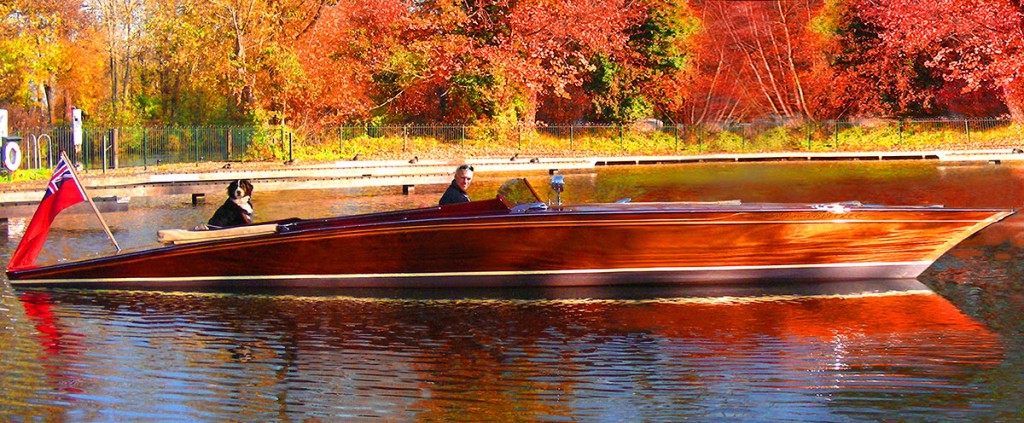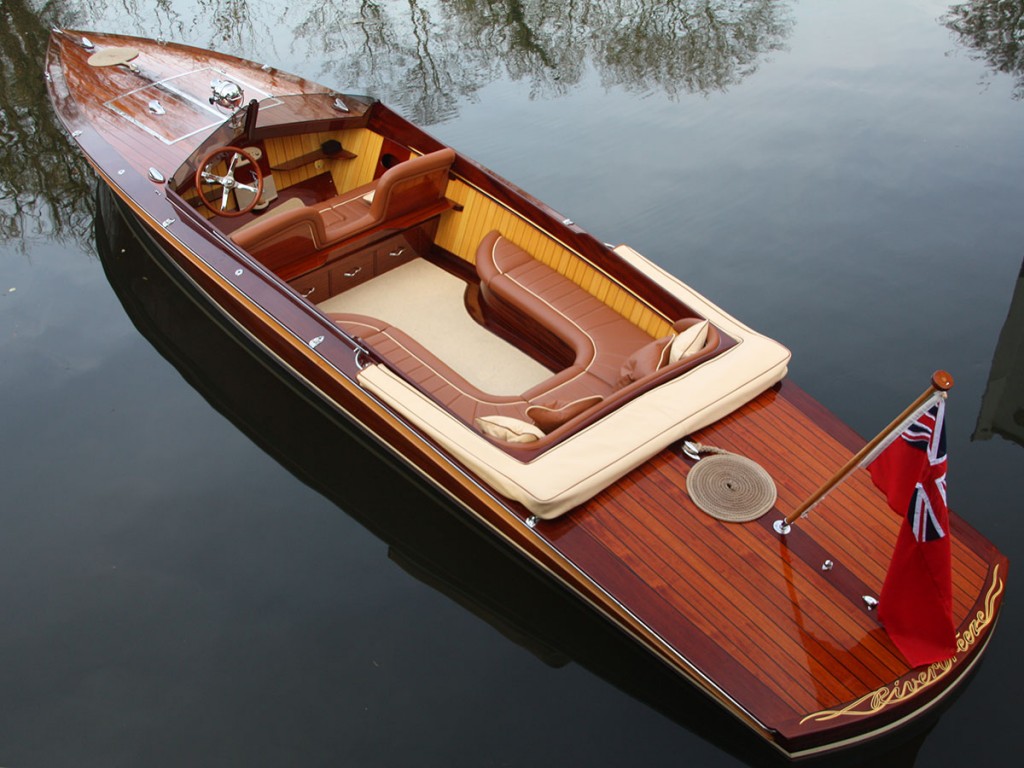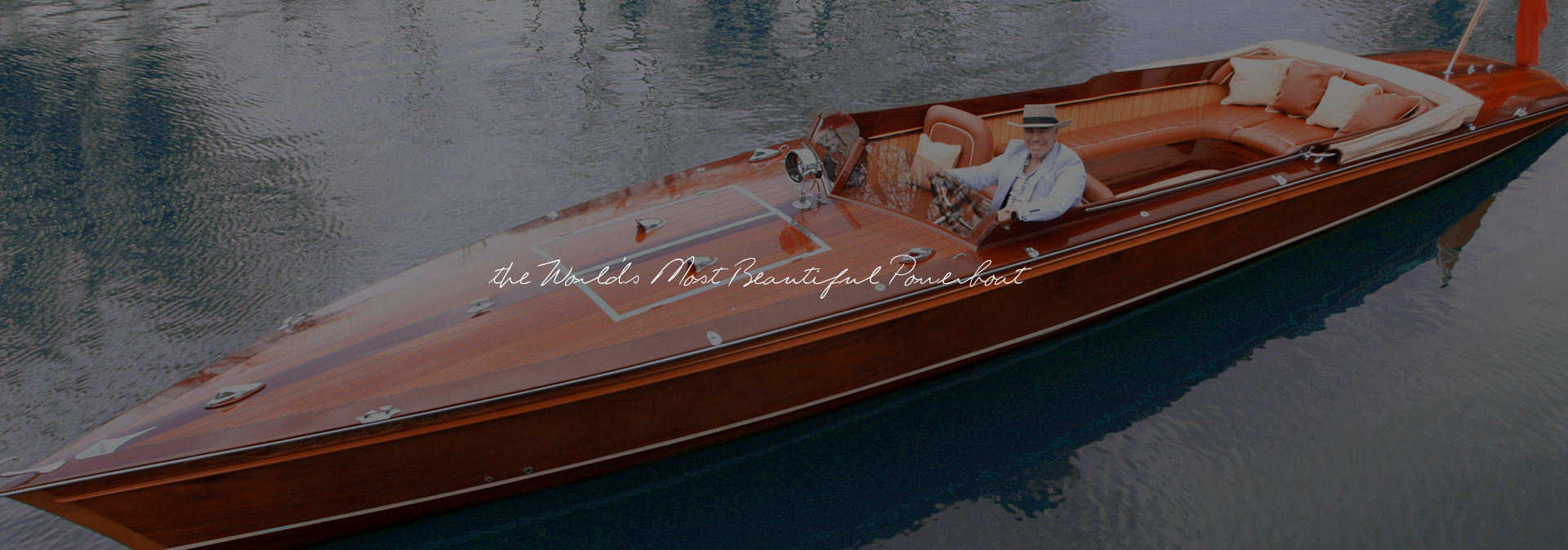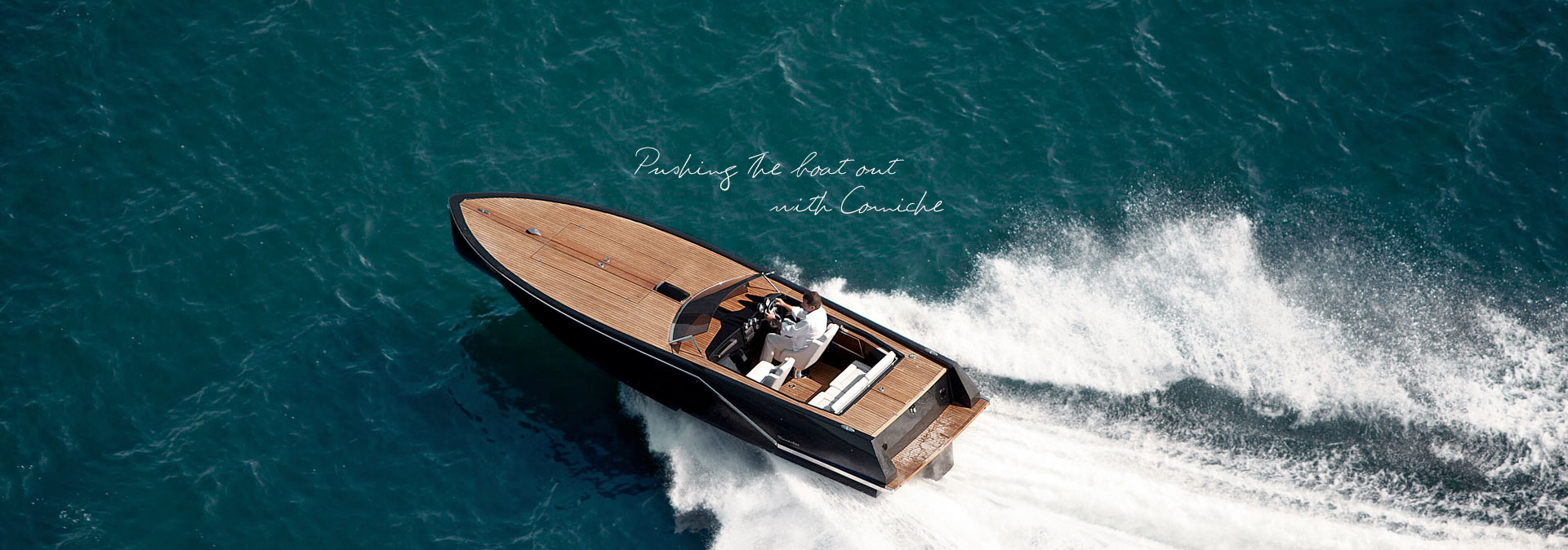Frank Stephenson, design director of Britain’s McLaren Automotive, is probably best known for his revivals of the petite Mini Cooper and Fiat 500. But floating near his home near London is a larger and more unhurried conveyance: a wood-hulled beauty of a riverboat, also designed by Stephenson. However, unlike his previous boat, which had a massive Dodge Viper engine coiled inside, the new Riverbreeze is all about smooth, silent sailing – powered by fully electric powertrain.
The first thing you’ll notice about this very special boat is it’s Cupid’s Arrow slicing through water. Featuring beautiful hardwoods, including contrasting rosewood and mahoganies from Brazil and Africa, slathered in 15 initial coats of grain-flattering lacquer. Adding another five per year, there’s not 35 coats. “It looks wet, with a shine that gets deeper and deeper,” says Stephenson.
As such, this 31-footer blows a kiss to a romantic pre-fiberglass boating era. To Stephenson, fiberglass vessels are like Tupperware: useful for the household, but not very sexy at all. “Wooden boats get better with age, they smell nice, they feel nice, every one has its own character,” he said in a recent interview with The Drive. We couldn’t agree more.
A sort of rumble seat up front opens via flip-up portals, not unlike the dihedral doors on the Stephenson-designed McLaren 650S and 570S. And that cool mermaid mascot on the stem? Straight from a 1932 Cadillac, a hood ornament that Stephenson found on eBay and had rechromed. “Her chest is out, hair flowing back. It’s just beautiful.”
With sailors and collectors falling for wooden boats like salty Gepettos, the likes of architect Frank Gehry (who we’ve written about before on the blog) are creating their own designs. Timber runabouts you could barely give away 20 years ago, from American companies such as Chris-Craft and Hacker-Craft, are fetching up to six figures in restored trim.
Naturally, models from Riva (which we’ve also covered in The Journal) are especially prized. One 1966 Super Aquarama Series II, a descendant of a 1962 original first tested by the late Fiat tycoon Gianni Agnelli, fetched $775,000 at auction a few years back—a jaw-dropping sum for a pocket-size vintage boat. That’s because, in their Sixties heyday, the typically Chevy-powered Rivas glamorized every port on the French Riviera as gotta-have accessory of royals, industrialists and movie stars. Elizabeth Taylor and Richard Burton hopped to ports from their yacht, the Odysseia, in a Riva Junior; Italian playboy Gigi Rizzi, known for swilling champagne and midnight waterskiing with Brigitte Bardot, says that she’d switch to a new Riva with every new boyfriend. You get the idea…
Stephenson says of his own sleek-lined superstar, “It’s in the vein of a Riva, but it’s stretched and more dramatic. It’s one of those labors of love, where I just wanted to make something special.” 
Instead of a fuel-thirsty V8 or V12, Stephenson sources power from a torpedo-shaped, electric pod motor, with 14.7 kilowatt-hours of storage from eight marine batteries that take about eight hours to charge. A typical day’s cruise mates might include neighbor Dhani Harrison, son of George Harrison, who Stephenson met at a Christmas party in Maranello when Eric Clapton was being fitted for his Ferrari Enzo seat.
Stephenson and crew will spend a good 10 hours cruising the Thames, rising and falling on a series of locks, all the way to Lechlade at the edge of the Cotswolds—the river’s highest navigable point, near the bubbling source of the Thames. The electric boat depletes roughly half its battery en route, Stephenson says, but there are charge points all along the river. And whilst his signature sports cars and bikes are fast, Riverbreeze is all about slowing down. “For a designer, it’s all about that balance. I’ll get up at 6 a.m. and beat myself up on a high-decibel Ducati all day. So when I get on the boat, all I want to hear is the birds and the water”.
“And there’s no laws against drinking and driving on the river so we’ll just smoke a pipe, drink some whiskey and chill.”
Almost sounds like the dawn of a new (but slightly calmer) Riva-era, right?
 SECURE PAYMENTS
SECURE PAYMENTS  FREE EXPRESS SHIPPING FOR
ALL ORDERS OVER €100
FREE EXPRESS SHIPPING FOR
ALL ORDERS OVER €100 FREE EXCHANGES & RETURNS
FREE EXCHANGES & RETURNS AVG. 3-5 BUSINESS DAYS DELIVERY
AVG. 3-5 BUSINESS DAYS DELIVERY
 NEXT
SHIPMENT TO
NEXT
SHIPMENT TO 







